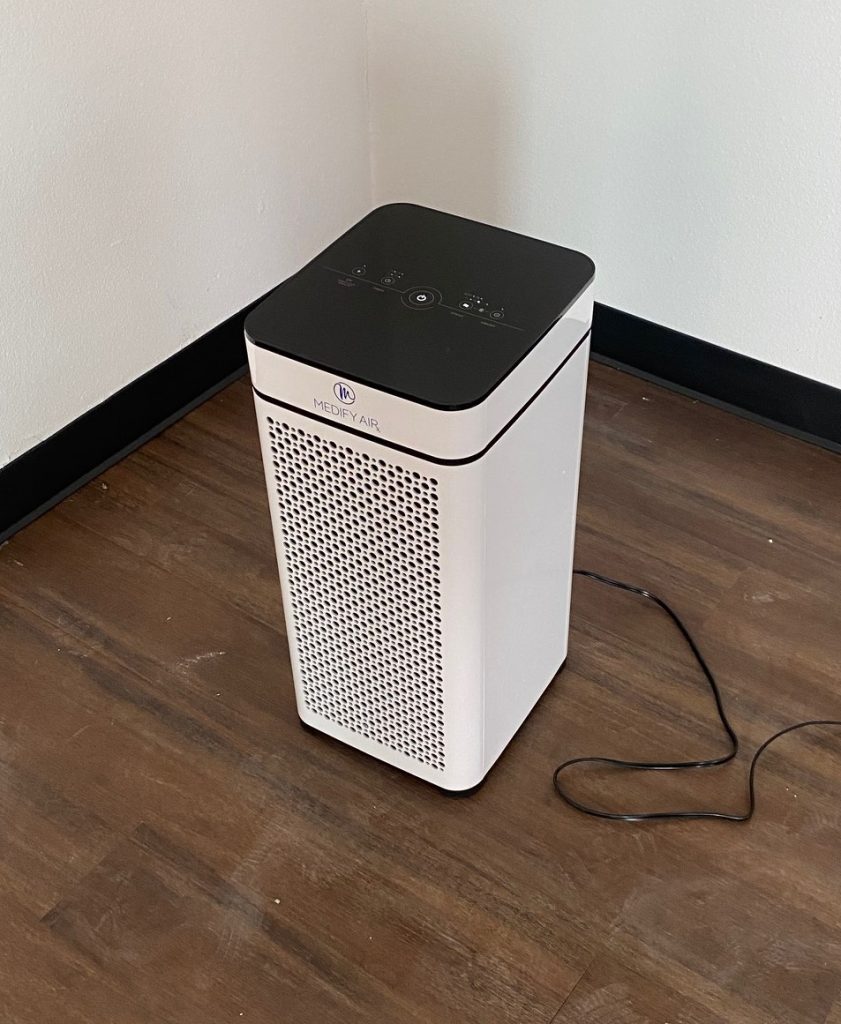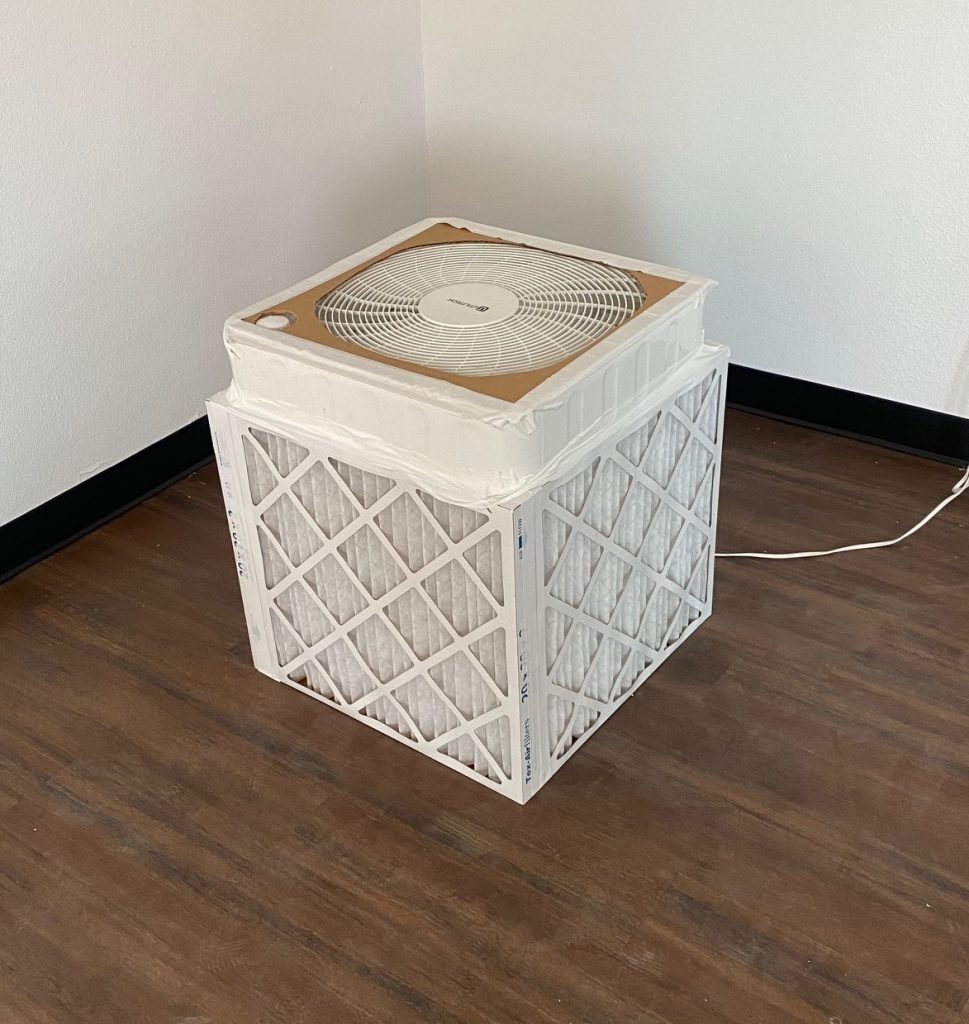By JIm Rosenthal
One of the best things about being involved in this Corsi-Rosenthal Box project is to see the tremendous amount of ingenuity, creativity, applied knowledge and technical skill shown by the many people who have built different versions of this DIY air cleaner. It is a continually evolving process and proof that a group effort can be very effective.
One of the most interesting developments is the use of PC fans. While the original design of a box fan and 4 or 5 MERV 13 filters is pretty hard to beat for ease of construction and cost, the PC fan versions address the concerns of energy usage and noise. They are quiet and use very little electricity.
But the question I have had is: Are they powerful enough to match the air cleaning performance of the box fan models? Air cleaner effectiveness is based on the three F’s – Filter + Fit + Flow. They all work to together for best results. But we need to add one more variable to the equation – “throw.” In other words, are the PC fans capable of expelling clean air into the space far enough away from the air cleaner so that it is not immediately recirculated back into the device? Without this “throw” factor, the air cleaner would not be able to distribute, dilute and remove the particles in the space effectively.
To check the “throw” factor of the PC fan versions of the Corsi-Rosenthal Box, we set up a simple test using a vacant office as our “chamber.” The office is 18 feet by 20 feet with 8 foot ceilings. We used a humidifier for our “particle generator.” Four air cleaners were included in the test: 1. a standard 4-sided CR box; 2. a CR Box using 6 PC fans and 4 filters, 3. a CR Box using 6 PC fans and 2 filters and 4. a commercial HEPA filter. No additional fans were used to “distribute” the air.
All tests were run with approximately the same starting particle levels. We used a Dylos particle counter and focused on the counts at the 0.5um particle range. This should give meaningful numbers for the removal of airborne viruses and wildfire smoke.
The first test was conducted with no air cleaner to establish the natural decay rate. The tests of the four air cleaners were run for a little over 20 minutes.
Since noise levels have been a concern, we decided to run the HEPA and CR Box Fan units on levels that did not exceed the mid 50’s decibel range. Noise levels were measured using an iPhone app. Electrical usage was measured using a “Kill-a-Watt” monitor.




Here are the results:

All DIY air cleaners outperformed the commercial HEPA. This is not a surprise. We have seen the same thing in all of our head-to-head comparisons. At last count there are 13 other peer-reviewed studies that have found the same thing. How can air cleaners using MERV 13 filters that are 50% effective on particles less than 1 um do better at removing sub-micron sized particles than a HEPA filter that is 99.97% efficient on these same particles? The answer is that filter effectiveness is not determined just by filter efficiency. It is the combination of the filter and the flow through the filter that gives the full picture.
So how did the PC Fan Corsi-Rosenthal Boxes compare to the original design on filter effectiveness? The design using 6 fans and a “cube” of 4 filters had virtually the same results as the original.
The design using 6 fans and 2 filters was less effective. Probably a couple of things contributed to this. First, the direction of flow from the air cleaner could reduce mixing in the space. (Of course, I am partial to the upward flow design.) Secondly, the available filter media area was about half of the original. This would cause higher resistance and lower air flow. However, the smaller footprint has some distinct advantages and may be more useful in many situations.
In my opinion, the Corsi-Rosenthal Boxes using PC fans work effectively. Kudos and many thanks to the creators. I can’t wait to see what is next.